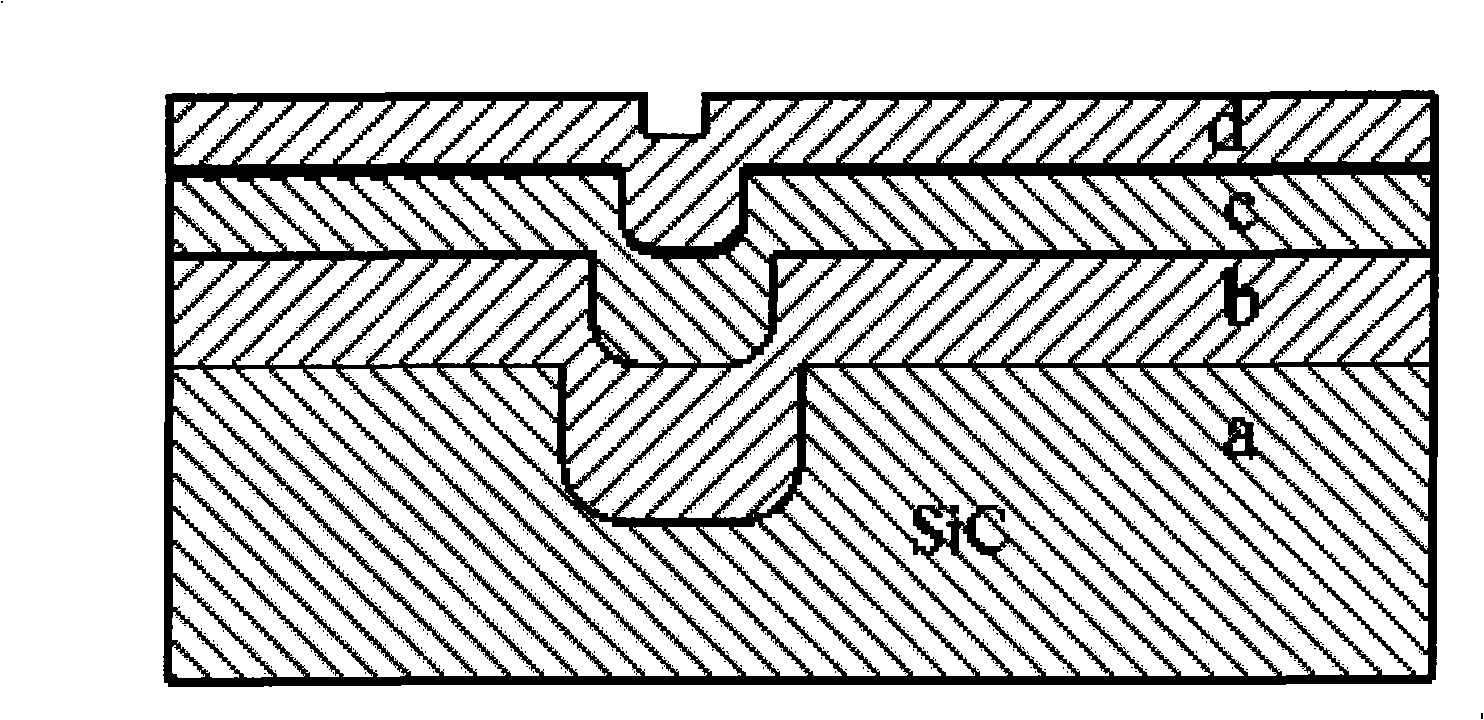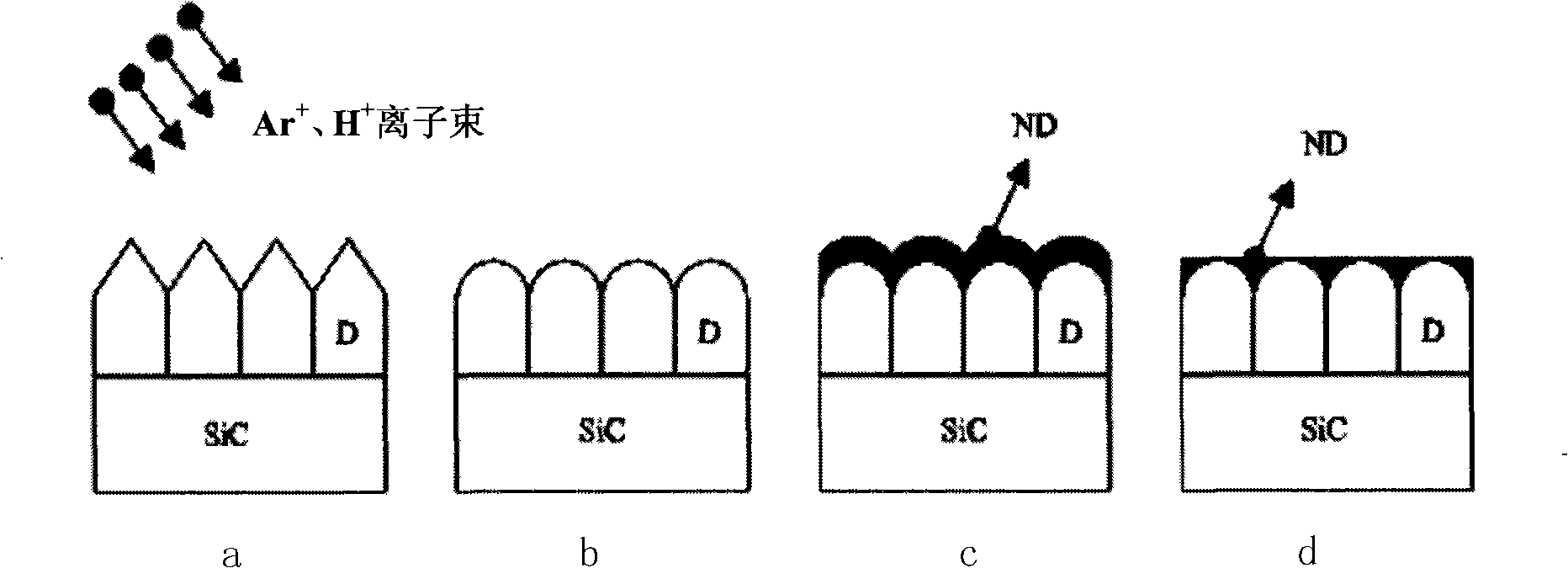Silicon carbide ceramic and method for manufacturing composite drawing mould of diamond
A silicon carbide ceramic and diamond technology, which is applied in the field of mold technology preparation, can solve the problems that silicon carbide ceramics and diamond coating composite molds have not yet been found, the friction and wear characteristics are significantly affected, and the performance of coating products is large. The effect of solving resource crisis, improving surface finish and saving raw materials
- Summary
- Abstract
- Description
- Claims
- Application Information
AI Technical Summary
Problems solved by technology
Method used
Image
Examples
Embodiment
[0026] Such as figure 1 As shown, where a is the original surface of the ceramic, showing sand holes (pit); b. is the surface after a diamond film deposition by CVD method and polished. The drastic reduction in the size of the trachoma is the result of a combination of faster diamond growth in the pits and thinning of the outer surface by polishing. c is the surface after the second CVD diamond deposition and polishing, and the size of the sand holes is further greatly reduced. d: After the third deposition and polishing, the trachoma almost disappeared. In this way, two purposes are achieved: (1) The trachoma defects gradually disappear, and the surface finish is greatly improved, which meets the requirements of the mold; (2) The diamond surface replaces the ceramic surface, because diamond is the hardest substance in the world, its Harder than ceramics (SiC, Si 3 N 4 、Al 2 o 3 etc.) are much higher, so the surface is ideally strengthened. The use of this ceramic / diamo...
PUM
 Login to View More
Login to View More Abstract
Description
Claims
Application Information
 Login to View More
Login to View More - R&D
- Intellectual Property
- Life Sciences
- Materials
- Tech Scout
- Unparalleled Data Quality
- Higher Quality Content
- 60% Fewer Hallucinations
Browse by: Latest US Patents, China's latest patents, Technical Efficacy Thesaurus, Application Domain, Technology Topic, Popular Technical Reports.
© 2025 PatSnap. All rights reserved.Legal|Privacy policy|Modern Slavery Act Transparency Statement|Sitemap|About US| Contact US: help@patsnap.com


